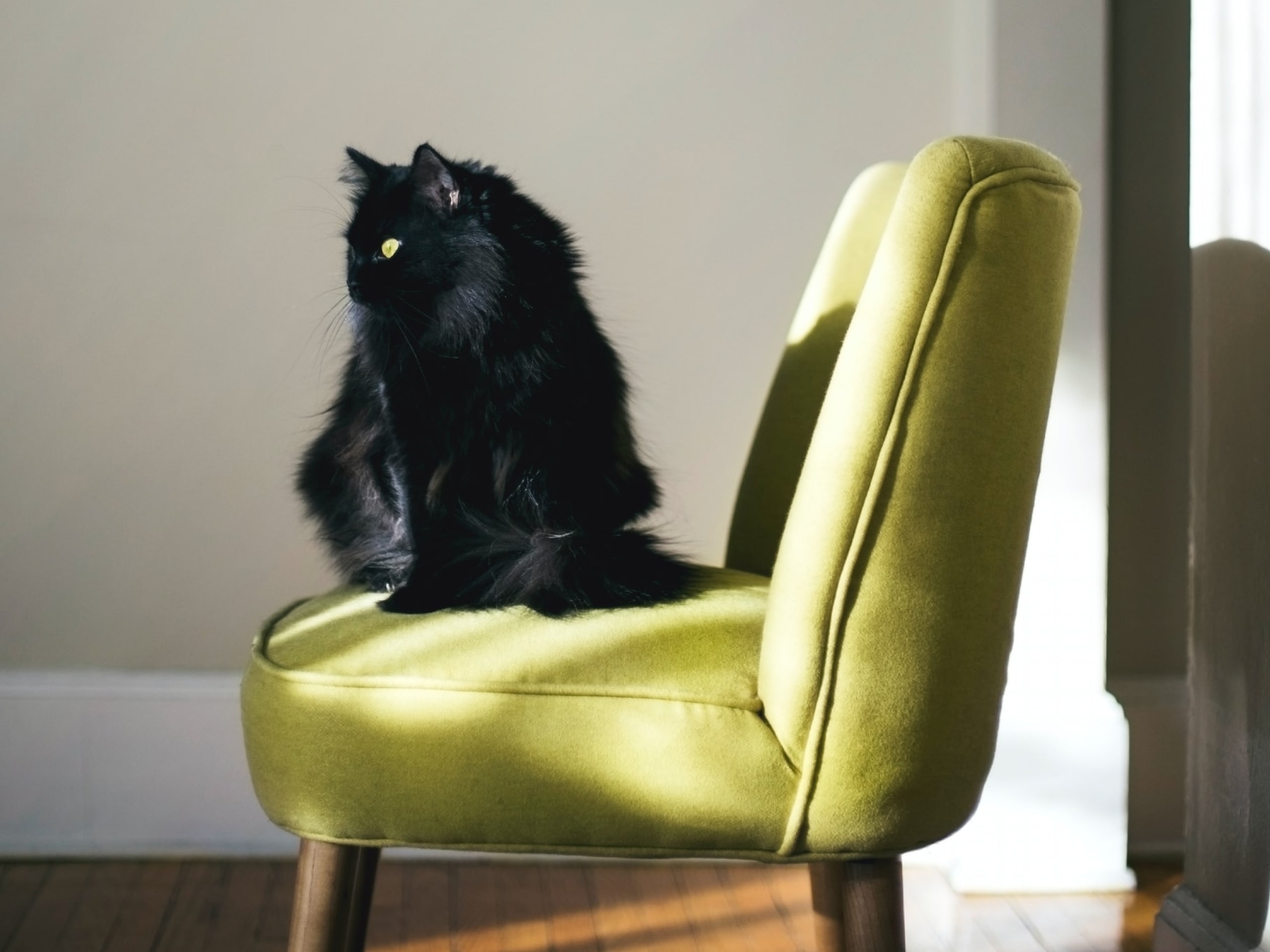
Some friendships are so strong you can seemingly read each other’s minds without saying anything. Did you know that you can also have that same connection with your cat? “Understanding your cat’s body language helps build and maintain your bond with them by helping you understand their mood so that you can address their needs,” Dr. Aliya McCullough, Fetch's Chief Veterinary Officer, says. “This can help pet parents know when their cat is scared, happy, ready to play or possibly sick or injured.”
Here are the different ways cats express themselves through body language, so you’ll know how to respond.
When reading your cat's body language, there are some key body positions to pay attention to. For example, look at changes in their ears, tail wags and eyes in relation to what's happening around them.
When a cat is scared, they'll usually arch their back, stare, have flattened ears, their tail will twitch or their hair may be stand up, Dr. McCullough explains. "Fearful cats may bolt, slink away to hide or freeze in one place," she adds.
It's important to know when your cat is sick or in pain so you can get them help as soon as possible. Dr. McCullough says to look for their ears being held back, dilated pupils or squinting eyes and a hunched back as signs they’re not feeling quite right. Cats in pain may hide, have abnormal body movements or you'll notice a change in their behavior.





Do you want to know if your cat is up to play with you? Look for signs including ears and whiskers in a forward position and a tail that is standing up and twitching. In addition, playful cats may stalk, pounce, swipe or even bite, Dr. McCullough says.
The signs of a content cat include half-closed eyes, sitting or lying down in a relaxed position, purring, a still tail, kneading, rubbing their bodies on people or objects or grooming themselves, Dr. McCullough shares.
According to Dr. McCullough, when slow blinking is coupled with loose body posture like stretching on their side, laying on their back, neutral ears and a flexible tail (the tip should be in the shape of a question mark), it usually means your cat is relaxed.
The Dig, Fetch Pet Insurance's expert-backed editorial, answers all of the questions you forget to ask your vet or are too embarrassed to ask at the dog park. We help make sure you and your best friend have more good days, but we’re there on bad days, too.
Photo by Kari Shea on Unsplash

up to 90% of vet bills – covered.
Every 6 seconds, a pet parent gets a $1000+ vet bill. Care for your pet & your wallet with Fetch.
Get your price